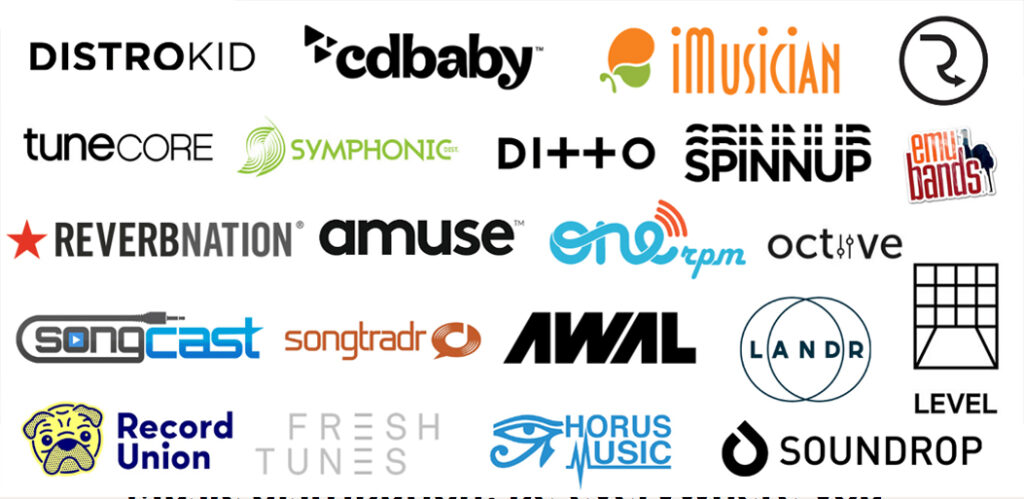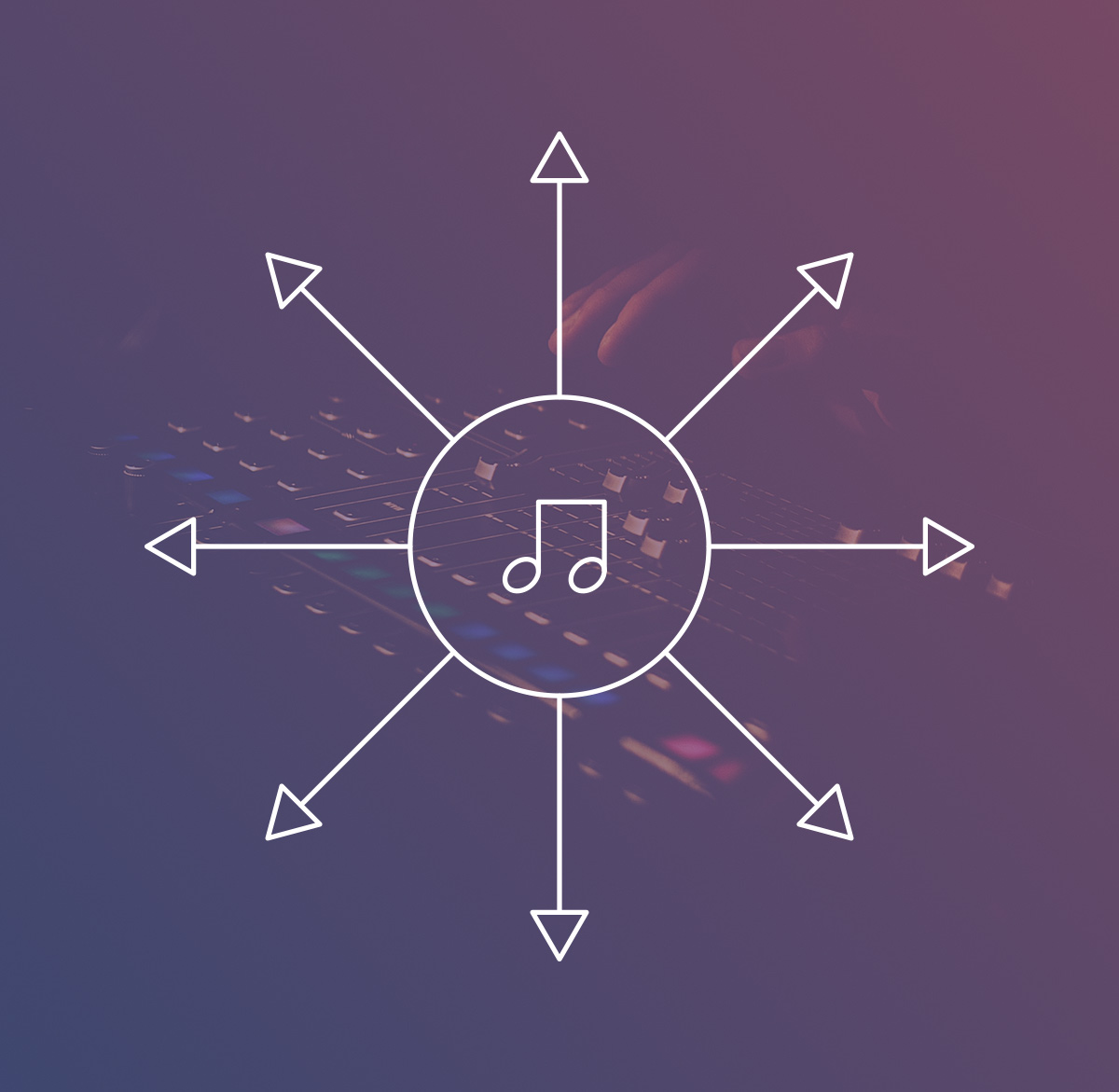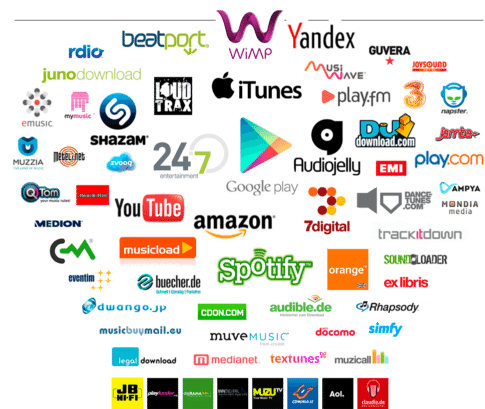Music distribution is the process of making music available for sale or streaming through various platforms. This process involves delivering music to music stores, streaming services, and other digital media outlets.
Music distribution allows artists to reach a wider audience and generate revenue from their music. In today’s digital age, music distribution is crucial in the success of any artist. With the internet and various streaming services, music distribution has become more accessible and easier for artists to reach their fans.
However, with the increase in the number of online platforms, choosing the right distribution company can be a daunting task. It is essential to find a reputable distribution company that can market and promote the music effectively to ensure a successful release. We explore what music distribution is, the various types of distribution, and how artists can choose the right distribution company for their needs.
The Basics Of Music Distribution
Music Distribution Defined
Music distribution refers to the process of making music available to the public. It involves the marketing, selling, and delivering of music to a mass audience. In the past, music distribution was primarily limited to physical copies like CDs and vinyl records, but with the advent of the internet, digital distribution has become the primary method of getting music to the masses.
Why Music Distribution Is Important
Music distribution is important because it allows artists to reach a wider audience and increase their fan base. Without distribution, an artist’s music would only be accessible to a small group of people. Distribution also helps artists to generate revenue from their music by making it available for purchase or streaming. Moreover, distribution ensures that an artist’s music gets to the fans in the format they prefer, which is critical in today’s music industry.
Types Of Music Distribution
There are two primary types of music distribution: physical and digital. Physical distribution involves the production of CDs, vinyl records, and other physical media that is shipped to stores for sale. This method is becoming less popular due to the rise of digital music distribution. Digital distribution involves making music available for download or streaming on digital platforms like iTunes, Spotify, and YouTube. Digital distribution is more efficient and cost-effective than physical distribution, and it allows artists to reach a wider audience with ease.
In conclusion, music distribution is essential for artists to reach a mass audience and generate revenue from their music. With the advent of digital distribution, it has become easier than ever for artists to get their music out to the masses.
How Music Distribution Works
Music distribution is the process of making music available to the public through various channels such as streaming platforms, physical copies (CDs, vinyl) and digital downloads. This involves partnering with distributors and record labels to ensure royalties are accurately collected and distributed to the appropriate parties.
Music distribution refers to the process of making recorded music available to the public through various channels, such as physical copies, online streaming, and downloads. The distribution of music today is vastly different from how it used to be, where music was primarily distributed through physical copies that were available in record stores. The emergence of digital technology has revolutionized the music industry, and music distribution has evolved to keep up with the times.
The Role Of Record Labels
Record labels play a critical role in the music industry, particularly in music distribution. They are responsible for discovering and signing artists, producing and packaging music, and marketing and promoting music to the public. Record labels provide the resources necessary for creating and distributing music, such as recording studios, engineers, and producers. They also handle the licensing of music and ensure that artists are paid for their work.
The Role Of Distributors
Distributors are companies that specialize in getting music into stores and online platforms. They act as the bridge between record labels and music retailers, ensuring that music is available to purchase or stream by using various distribution channels. Distributors play a crucial role in getting music out to the public as they help independent artists access markets that they might not have access to otherwise.
Digital Music Distribution
The way music is distributed has evolved with technology, and digital music distribution has become the standard in recent years. Digital distribution is the process of delivering music to digital platforms, such as iTunes, Spotify, and Amazon Music, and making it available to consumers through streaming or downloading. Digital music distribution has made it easier for artists to reach a global audience as it is not confined to a particular geographical location. Overall, music distribution plays a significant role in the music industry, and its evolution has influenced how music is created, produced, and consumed. The combined efforts of record labels, distributors, and digital music platforms have made it easier for artists to showcase their work and for music lovers to access their favorite tunes.
Challenges Of Music Distribution
Music distribution can be an exciting prospect for artists who are looking to share their music with a wider audience. However, it also comes with its fair share of challenges. In this section, we will focus on three major challenges of music distribution:
Competing With Major Labels
The music industry is highly competitive, making it difficult for independent artists to gain exposure. Major labels often have more resources, bigger marketing budgets, and established relationships with key players in the industry. This puts independent artists at a disadvantage when it comes to distribution and promotion.
- Major labels have established relationships with top streaming platforms and can negotiate favorable deals for their artists.
- Independent artists may struggle to get their music featured on popular playlists or recommended to listeners.
- Major labels often have more physical retail space and distribution channels than independent artists.
Navigating Streaming Platforms
Streaming platforms have become the primary method of music consumption, making it crucial for artists to have their music available on these platforms. However, navigating the various streaming platforms can be a challenge.
- Each streaming platform has its own set of rules and guidelines for submitting and promoting music.
- Artists may need to pay for premium features or promotional opportunities on certain platforms.
- The algorithms used by streaming platforms can be complex, making it difficult for artists to predict how their music will be recommended to listeners.
Lack Of Physical Retail Space
In the past, physical retail space was a key component of music distribution. However, with the rise of streaming platforms, physical retail space has become less important. This can be a challenge for independent artists who may not have access to physical retail space.
- Major labels often have more physical retail space and distribution channels than independent artists.
- Independent artists may need to rely on online retailers or direct-to-consumer sales to distribute their music.
- Without physical retail space, it can be more difficult for independent artists to build a fan base and gain exposure.

Credit: www.femnoise.com
Tips For Successful Music Distribution
Music distribution refers to the process of disseminating music tracks to various platforms or channels such as music stores, streaming sites, and radio stations. Effective music distribution involves selecting the right distribution service and marketing the music to the target audience.
Music distribution is the process of making music available to the public through different channels like online music stores, streaming services, and physical stores. It involves an agreement between an artist or record label and a music distributor. The music distributor then helps with the promotion and sale of the music to reach a wider audience.
Choosing The Right Distributor
Choosing the right music distributor is crucial for successful music distribution. The distribution company should provide an efficient, user-friendly platform that is compatible with various music platforms. Investigating the customer service and reviews of each distributor are important to determine their reputation and trustworthiness. To find the right distributor for your music, you should also consider the services or features they offer. Some distributors provide marketing support, promotion on social media, and assistance in setting up distribution accounts. Compare and contrast features before selecting a distributor that best aligns with your music distribution goals.
Designing Effective Cover Art
The cover art plays a crucial role in attracting the target audience and creating brand awareness. Your cover art should clearly communicate the genre, mood, and style of your music. Ensure it is unique, captivating, and eye-catching. Using high-resolution images and readable text is important so that it captures the customer’s attention.
Maximizing Metadata
Metadata is the information attached to an audio file that helps with organization and searchability. Accurate metadata increases the visibility of your music and helps it reach your target audience. It includes details such as the song title, artist name, album artwork, and genre. The metadata should be accurate, consistent and complete. Therefore, properly formatted metadata optimizes discoverability of your music and prevents any confusion during distribution. In conclusion, successful music distribution requires attention to key details such as choosing the right distributor, designing effective cover art, and maximizing metadata. By selecting the right distributor and adhering to effective metadata, your music can reach a wider audience. Therefore, creating appealing cover art sets the tone of the music and increases the likelihood of success.
Future Trends In Music Distribution
The future of music distribution is likely to focus on digital streaming services, such as Spotify and Apple Music, as these platforms continue to grow in popularity. While physical options, such as vinyl records and CDs, remain appealing to some fans, the convenience of streaming means it will likely remain the dominant method of music distribution for years to come.
Music distribution has significantly evolved over the last decade, adapting to the digital landscape and transforming the way music reaches consumers. Today, artists and music producers have access to advanced distribution tools that offer a more cost-effective and efficient way to distribute music. As technology continues to advance, the future of music distribution is promising. Here are some of the trends shaping the future of music distribution.
The Rise Of Independent Distribution
Independent distribution has been steadily gaining traction in the music industry over the years. With independent music distribution, artists and record labels have more control over their music’s distribution and can distribute their music directly to various streaming platforms. The rise of social media and other digital platforms has largely contributed to the growth of independent distribution. Through these platforms, artists can connect directly with their fans and distribute their music without having to go through a major record label.
Increased Emphasis On Data And Analytics
Data and analytics have always been essential elements in the music distribution process. They provide important insights into consumer behavior and help music distributors make data-driven distribution decisions. In the future, data and analytics are expected to play an even more significant role in music distribution. With the rise of artificial intelligence and machine learning, data analytics tools are becoming more sophisticated and accurate. This development will enable music producers to analyze consumer behavior more efficiently and make better-informed decisions regarding music distribution.
The Impact Of Emerging Technologies
As technology continues to evolve, it is transforming the music industry in various ways. One of the most significant impacts of emerging technologies is how music is distributed. Today, music distribution has shifted to digital platforms such as Spotify, Tidal, and Apple Music, and the future is expected to see more advancement in this area. For instance, blockchain technology is projected to revolutionize the music industry by providing a decentralized, transparent, and secure digital rights management system that reduces fraud and ensures artists are fairly compensated for their work. In conclusion, the future of music distribution is exciting, with various trends shaping the landscape. Independent distribution is on the rise, data and analytics tools are becoming more sophisticated, and emerging technologies such as blockchain are expected to significantly impact the music industry. Music distributors and producers who stay up to date with these trends are more likely to succeed in the highly competitive music distribution space.

Credit: diymusician.cdbaby.com

Credit: playliststreams.com
Frequently Asked Questions For What Is Music Distribution
How Do Music Distributors Make Money?
Music distributors make money by taking a percentage of the revenue generated from the distribution of music. This can include income from streaming services, downloads, physical copies, and synchronization rights. Some distributors may also charge upfront fees or offer additional services for a fee.
What Does A Distributor Do In Music?
A music distributor is responsible for marketing and selling music to retailers and online stores. They work with record labels and independent artists to distribute their music to a wider audience and increase sales. The distributor also handles the logistics of shipping physical copies of the music and ensuring that the royalties are paid out correctly.
Do I Need A Distributor For My Music?
Yes, if you want your music to be available on various digital platforms such as Spotify, Apple Music, and Amazon Music, you need a distributor. They will help you to upload, promote, and distribute your music, and take care of licensing and royalties.
A distributor will also help you to reach a wider audience and increase your chances of getting noticed.
How Do I Distribute My Own Music?
To distribute your own music, you can choose from various online platforms. The most popular ones are Spotify, Apple Music, Amazon Music, and Google Play. You can also use social media platforms like Instagram and Facebook to promote your music.
Ensure that you have all the necessary licenses and rights to distribute your music.
Conclusion
Music distribution is the process of getting music to listeners through various channels like streaming platforms, physical copies, and radio stations. By using music distributors, artists can reach a wider audience without having to worry about logistics. It’s important for artists to choose their distributor carefully and ensure that their music is available on all major platforms.
With the increasing popularity of music streaming, music distribution has become a crucial aspect of the music industry, allowing artists to connect with fans all over the world.